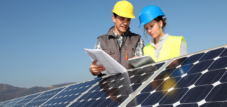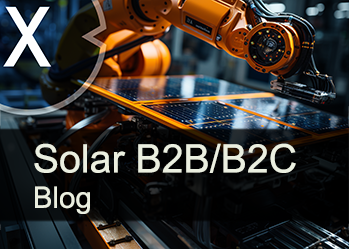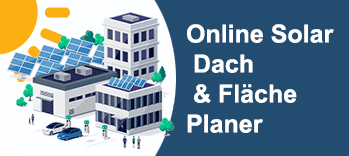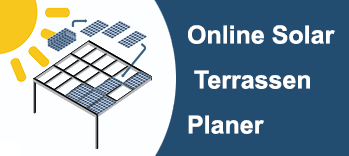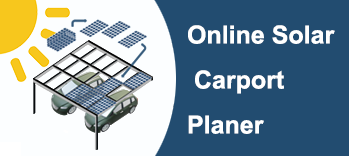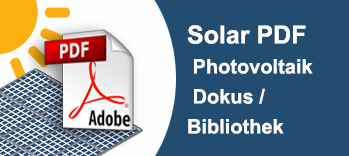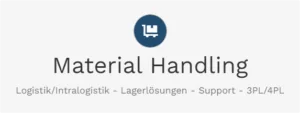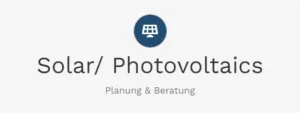Solar park developer and project manager MEC Energy faces insolvency – planning a solar power plant? What you need to consider now
Xpert pre-release
Language selection 📢
Published on: September 14, 2025 / Updated on: September 14, 2025 – Author: Konrad Wolfenstein

Solar park developer and project manager MEC Energy faces insolvency – Planning a solar power system? What you need to consider now – Image: Xpert.Digital
Solar boom and wave of bankruptcies: Why Germany's solar companies will give up en masse in 2025
The solar paradox: record performance, but thousands of bankruptcies – what's going wrong here?
Germany will experience an unprecedented solar paradox in 2025: While installed photovoltaic capacity breaks new records with over 107 gigawatts, a massive wave of bankruptcies is rocking the industry. The most recent example is MEC Energy GmbH, an established developer of solar parks, which had to file for insolvency under self-administration with the Düsseldorf District Court at the beginning of September. However, the MEC Energy case is not an isolated incident. Rather, it is a symptom of a profound crisis that has already affected industry giants such as Eigensonne, Zolar, and Envoltec and casts a bleak light on the state of Germany's energy transition.
The reasons for this apparent contradiction are complex: a ruinous price war fueled by cheap imports from China, drastically declining margins, declining demand due to the tense economic situation, and an increasingly uncertain subsidy policy. In particular, the new regulation on negative electricity prices under the Solar Peak Energy Act 2025 and the steady reduction of feed-in tariffs are depriving many companies of their economic basis. The insolvency of project developers like MEC Energy not only jeopardizes ongoing and planned projects but also unsettles municipalities, residents, investors, and consumers. The industry is facing a fundamental market shakeout that will determine who the winners and losers of the energy transition will be and whether Germany's ambitious climate goals are even achievable.
Suitable for:
- Solar system construction – current status in Germany: The situation in the photovoltaics industry will remain tense in 2025
What happened at MEC Energy GmbH?
MEC Energy GmbH filed for insolvency with the Düsseldorf District Court on September 1, 2025, following the filing of the corresponding application on June 2. The proceedings were opened under the case number 504 IN 115/25, and the court ordered self-administration. This means that the management remains capable of operating under the supervision of an administrator and can dispose of the insolvency estate.
Insolvency and excessive indebtedness are cited as the reasons for the insolvency. The creditors' meeting is scheduled for November 6, 2025, at the Düsseldorf District Court, where a decision on the further course of action will be made. All creditors have been requested to file their claims with the insolvency administrator immediately.
What projects has MEC Energy implemented?
MEC Energy GmbH has been involved in several major solar park projects in recent years. The completed projects include an 8.3-megawatt plant in Ammerland, Lower Saxony, a 5.5-megawatt plant in Todtenweis, and a 3-megawatt plant in Altenschwandt, both in Bavaria. These projects demonstrate the company's ability to develop and implement substantial solar parks.
The company specialized in the development and implementation of open-space photovoltaic systems, a segment that appears to be facing significant economic challenges despite the general solar boom.
The paradoxical situation of the solar industry
How can a solar project developer become insolvent despite the photovoltaic boom?
This question goes to the heart of the current problems in the German solar industry. Although Germany reached a new record high in 2025 with over 107 gigawatts of installed photovoltaic capacity, the industry is simultaneously experiencing a massive wave of insolvencies. In the first three quarters of 2024 alone, 16,222 corporate insolvencies were registered, an increase of 22.2 percent over the previous year.
This apparent contradiction is explained by several structural problems: High demand led to strong expansion by many companies, which stocked up on goods and hired staff. When the economic situation deteriorated in 2024 and demand collapsed, these companies came under enormous cost pressure.
In addition, cutthroat competition is causing drastically declining margins. Solar module prices fell by as much as 40 percent in 2024, which has become particularly problematic for companies with high inventory levels. Many companies see themselves in a "self-destructive price war" that will destabilize the entire industry in the long term.
Which other companies are affected by the wave of bankruptcies?
The insolvency of MEC Energy is not an isolated incident, but part of an industry-wide restructuring. Prominent insolvencies include Eigensonne, one of Germany's largest solar providers, as well as Envoltec, Enersol, Wegatech, and Solarmax. Fellensiek Projektmanagement GmbH & Co. KG from Jever, an experienced developer in the solar energy sector, also filed for insolvency in 2024.
The Berlin-based company Zolar, which was still considered a rising star in 2023, stopped selling its solar systems in September 2024 and laid off more than half of its employees. A similar picture emerges internationally: US pioneer Sun Power filed for bankruptcy, and Norwegian provider Otovo saw its revenue halve, resulting in half of its jobs being eliminated.
Suitable for:
- PV bankruptcy: Inverter and battery storage manufacturer Solarmax from Burgau in Bavaria is insolvent
Structural challenges of the solar industry
What role do the EEG feed-in tariff cuts play?
The ongoing reduction in feed-in tariffs poses significant challenges for solar companies. Currently, the tariff is only 7.87 cents per kilowatt hour for smaller systems and even less for larger installations. According to the Renewable Energy Sources Act, this tariff is reduced by one percent every six months.
Particularly problematic is the new regulation on negative electricity prices, introduced by the Solar Peak Power Act 2025. In the event of overproduction of solar power, the remuneration for new systems is completely eliminated. In the first half of 2025, this already occurred for 389 hours – an increase of approximately 80 percent compared to the previous year.
This development clearly demonstrates the limitations of the current funding model. While politicians continue to promote solar expansion, the economic fundamentals for many companies are becoming increasingly difficult.
How do negative electricity prices affect the industry?
The frequency of negative electricity prices increased dramatically in 2025. May 2025 was considered the record month with 130 negative hours, followed by June with 141 hours. Electricity prices were negative on a total of 20 days in May, reaching a low of minus 250 euros per megawatt hour on May 11.
For solar companies, this means that their systems generate no revenue during these periods, while operating costs continue to accrue. Since February 2025, new systems no longer receive feed-in tariffs during these periods, further worsening their profitability. While the lost hours of compensation are added to the 20-year subsidy period, this does not address the companies' acute liquidity problems.
Market dynamics and competition
Why is demand declining despite climate protection goals?
The decline in demand for photovoltaic systems is paradoxical given the political climate targets, but can be explained by several factors. The strained economic situation in Germany is causing both private households and companies to postpone investments in renewable energies. High living costs and rising interest rates are exacerbating this reluctance.
A survey by the German Solar Industry Association found that 62 percent of surveyed installers reported a noticeable decline in demand compared to the previous year. Private rooftop systems are particularly affected, while large-scale projects remain relatively stable.
In addition, uncertainties about future funding conditions and unclear economic prospects are causing uncertainty among potential investors. Many are waiting to see whether the general conditions will improve again.
What is the impact of international competition?
International competition, particularly from Chinese suppliers, is putting German solar companies under massive pressure. Cheap components from China are leading to price erosion, which puts German companies with higher production costs and quality standards at a disadvantage. This pressure is exacerbated by overcapacity on the global market.
The global market for residential solar systems declined by 15 percent in 2024 – after four years of continuous growth of 20 percent annually. This international development hits German companies particularly hard, as they often rely on exports or work with imported components.
The result is a ruinous price war that many established German companies cannot survive. Even major players like Dresden-based Solarwatt have had to cease production because the competitive pressure from China has become too great.
Impact on ongoing and planned projects
What will happen to MEC Energy's planned solar park projects?
The future of the projects planned by MEC Energy is uncertain. A solar park was still planned for construction in the Rhein-Sieg district, for which an information event for affected residents was held last week before the insolvency filing. However, the public hearing planned by the city was canceled after the insolvency was announced.
In insolvency proceedings under self-administration, it is generally possible to complete ongoing projects or transfer them to other companies. However, this depends on whether investors or buyers can be found for the projects and whether the legal and financial framework permits this.
For affected property owners and municipalities, this means a period of uncertainty. Contracts already concluded may need to be renegotiated, and planning procedures could be significantly delayed.
How do communities and residents react to such bankruptcies?
Reactions in the affected communities are mixed, reflecting the complex social debate surrounding solar parks. While some municipalities want to advance the energy transition and see solar parks as an important contribution to climate protection, local resistance to the projects often forms.
In Stadland, around 50 residents protested against a planned solar park along the railway line, arguing that solar installations belong on already sealed surfaces and not in the open countryside. Similar protests took place in Schönau, where residents initiated a referendum against a 17-hectare solar park.
The insolvency of project developers like MEC Energy could exacerbate this resistance, as it fuels doubts about the industry's integrity and reliability. Residents fear that planning procedures that have already begun will remain in limbo or that other investors with potentially different ideas will take over the projects later.
New: Patent from the USA – Install solar parks up to 30% cheaper and 40% faster and easier – with explanatory videos!

New: Patent from the USA – Install solar parks up to 30% cheaper and 40% faster and easier – with explanatory videos! - Image: Xpert.Digital
At the heart of this technological advancement is the deliberate departure from conventional clamp fastening, which has been the standard for decades. The new, more time- and cost-effective mounting system addresses this with a fundamentally different, more intelligent concept. Instead of clamping the modules at specific points, they are inserted into a continuous, specially shaped support rail and held securely. This design ensures that all forces occurring—be they static loads from snow or dynamic loads from wind—are evenly distributed across the entire length of the module frame.
More about it here:
Market consolidation in photovoltaics: winners and losers
Industry analysis and market consolidation
Is the current wave of insolvencies a necessary market consolidation?
Industry experts also view the current wave of insolvencies as a necessary market consolidation. During the boom years of 2021 to 2023, many new providers entered the photovoltaic market, leading to overcapacity and increased competitive pressure. Many of these companies lacked sufficient capital resources or experience to survive economic difficulties.
The German Solar Industry Association emphasizes that the market slump is put into perspective given the strong growth of recent years. For many established companies, the slowdown in demand was not entirely unexpected, even though it was challenging.
In the long term, only financially strong and well-positioned companies will likely prevail. This could lead to industry consolidation, which could ultimately contribute to more stable market structures and more sustainable business models.
Suitable for:
Which companies will survive the crisis?
Companies that are surviving the current crisis are distinguished by several characteristics: They have solid financial resources, have adapted to changing market conditions in a timely manner, and rely on diversified business models. Companies that specialize in self-consumption solutions and storage systems are particularly successful, as their dependence on feed-in tariffs is lower.
Regional installers with established customer relationships also have a better chance of survival than pure online providers or intermediaries. They can respond more flexibly to local needs and have often built more stable business relationships.
Innovative companies developing new technologies such as floating PV or specialized applications for industrial processes can also better differentiate themselves from the competition. These niche markets offer higher margins and less pricing pressure than the standard market for rooftop systems.
Political and regulatory framework
How does politics influence the industry crisis?
Politics plays a crucial role in the current industry crisis. On the one hand, ambitious expansion targets for renewable energies are being promoted—215 gigawatts of photovoltaic capacity are to be installed by 2030. On the other hand, at the same time, the funding conditions are continually deteriorating.
The 2025 Solar Peak Power Act introduces further restrictions by eliminating compensation for negative electricity prices. In addition, the federal government plans to gradually lower the threshold for direct marketing – from the current 100 kilowatts to ultimately 25 kilowatts.
This contradictory policy is unsettling investors and companies. While expansion is politically desired, the economic foundations for it are systematically deteriorating. This leads to planning uncertainty, which is putting many companies in existential difficulties.
What role does the Solar Peak Act play?
The 2025 Solar Peak Act marks a turning point in German solar subsidies. For the first time, it eliminates the subsidy for new systems in the event of negative electricity prices and introduces a feed-in cap of 60 percent unless smart meters are installed.
These changes are intended to prevent grid congestion and ease the burden on the federal budget, but they hit companies hard. The economic viability of new projects is hampered because revenues become more unpredictable. This is particularly problematic for larger ground-mounted plants, which often lack storage options and are entirely dependent on feed-in.
The law thus reinforces the trend toward optimizing self-consumption and makes storage systems even more important. For pure project developers like MEC Energy, who rely on feed-in tariffs, the business outlook is significantly worsening.
Technological and economic perspectives
How is the economic viability of photovoltaic systems developing?
The economic viability of photovoltaic systems has changed fundamentally. While feed-in tariffs used to be the focus, self-consumption is becoming increasingly important. With current electricity prices of 29.50 to 35.80 cents per kilowatt hour and production costs of 8 to 12 cents per kilowatt hour, photovoltaics remains attractive for end consumers.
For project developers and investors, the situation is different. While lower module prices have reduced investment costs, the simultaneous decline in feed-in tariffs and the new risks posed by negative electricity prices are significantly reducing returns. Many business models based on the guaranteed EEG remuneration no longer work.
The future likely lies in integrated solutions that combine generation, storage, and intelligent consumption management. Pure feed-in projects, on the other hand, are becoming increasingly difficult to implement.
What alternatives are there to conventional solar parks?
Given the challenges of conventional ground-mounted systems, alternative concepts are gaining traction. Floating PV on water surfaces offers new opportunities without competing with agriculture for land. Agri-PV combines power generation with agricultural use and can achieve greater acceptance in rural areas.
Innovative approaches such as photovoltaics on conveyor belts or other industrial systems make optimal use of already sealed areas. Combining solar parks with storage systems and sector coupling—for example, for hydrogen production—can also enable new business models.
Community solar parks, in which local communities participate financially, can both increase acceptance and improve financing. Such projects demonstrate that successful solar park development is possible even in difficult times if the right concepts and partners are found.
Impact on consumers and investors
How can customers protect themselves from losses?
The wave of bankruptcies in the solar industry has unsettled many customers who already have ordered or installed systems. Consumer advocates recommend several protective measures: Before placing an order, check the provider's creditworthiness and company history. How long has the company been in existence? Are there positive customer reviews? Are annual reports available?
When financing, no upfront payments or only small down payments should be made. It's also important to take out warranty insurance or choose providers with appropriate security. Regionally established trades businesses often have a higher probability of survival than purely online brokers.
For customers already affected, it is important to seek legal assistance quickly and file their claims in insolvency proceedings. For ongoing projects, it is worth checking whether alternative providers can take over the work.
What impact does the crisis have on investors?
Institutional investors and financial service providers are becoming more cautious about financing solar projects. Increased default risks are leading to higher interest rates and stricter credit assessments. This, in turn, is making financing new projects more difficult and increasing pressure on companies.
For private investors in community solar parks or other investment models, the risk of total loss is increasing. Careful review of project developers and diversification of investments are becoming even more important.
At the same time, however, opportunities arise for financially strong investors who can acquire established companies or project pipelines on favorable terms. The market shakeout could lead to consolidation in the longer term, which could benefit the remaining players.
Future prospects and development perspectives
How will the solar industry develop in the coming years?
The German solar industry is facing a fundamental transformation. Pure expansion based on the current model of guaranteed feed-in tariffs is reaching its limits. The future belongs to intelligent, networked systems that optimally coordinate generation, storage, and consumption.
Negative electricity prices will continue to increase—estimates suggest approximately 1,000 hours per year in the 2030s. This requires new business models that can exploit this volatility as an opportunity. Flexibility will become a key factor for success.
The industry is expected to undergo significant consolidation. Many small and medium-sized companies will disappear or be acquired by larger players. This may lead to more stable market structures, but it will also reduce the diversity and regional focus of many providers.
What role does integration with other technologies play?
The integration of photovoltaics with other technologies will be crucial for the future of the industry. Combinations with battery storage, heat pumps, electric vehicle charging stations, and power-to-X applications create new value creation opportunities.
Sector coupling makes it possible to use surplus solar power in other areas—for example, for hydrogen production or industrial processes. This can create economically viable uses even in times of negative electricity prices.
Smart grids and digital energy management systems are becoming increasingly important for optimally integrating volatile solar power production. Companies that can offer such integrated solutions have better future prospects than mere module suppliers or project developers.
Social and environmental dimensions
How does the industry crisis affect climate goals?
The wave of bankruptcies in the solar industry is jeopardizing Germany's ambitious climate goals. 215 gigawatts of photovoltaic capacity are to be installed by 2030—doubling current capacity in just five years. If the industry's problems persist, this goal will be difficult to achieve.
The 7 gigawatts of new capacity added in the first half of 2025 is roughly equivalent to the 2023 level, but significantly below political expectations. If established project developers like MEC Energy fail, there will be a lack of capacity for developing new projects.
At the same time, the negative headlines about bankruptcies could damage confidence in renewable energies overall and impair social acceptance of the energy transition.
What are the effects on local acceptance?
The increasing number of insolvencies among solar project developers can further worsen the already often difficult local acceptance of solar parks. When companies become insolvent in the middle of planning processes or even after construction has begun, this creates uncertainty and a loss of trust in the affected communities.
Citizen protests against solar parks are increasing, with doubts about the projects' economic viability playing a role alongside aesthetic and environmental arguments. The insolvency of MEC Energy in the Rhein-Sieg district is a prime example of how planned citizen participation processes can be disrupted by such events.
For the future development of solar energy, it is therefore crucial that the remaining companies regain the trust of the public through transparency and reliability.
Suitable for:
- PV bankruptcy: Solar company from Leipheim is insolvent - ESS Kempfle filed for bankruptcy under self-administration on August 13th
An industry in change
The insolvency of MEC Energy GmbH is a prime example of the profound crisis facing the German solar industry in 2025. Despite, or perhaps because of, the ongoing photovoltaic boom, many companies face existential challenges. The combination of declining feed-in tariffs, increasingly negative electricity prices, intensified international competition, and structural market problems is leading to a restructuring that presents both opportunities and risks.
As established business models collapse, new opportunities arise for innovative companies that can offer integrated energy solutions. The future of the solar industry no longer lies in pure electricity production with guaranteed remuneration, but in the intelligent integration of generation, storage, and consumption.
This poses a significant challenge for Germany's climate goals. The necessary massive expansion of photovoltaics must take place under completely different conditions. Whether this succeeds depends on whether politics, business, and society can work together to develop viable solutions for the energy transition that are both economically sustainable and ecologically effective.
The coming years will show whether the German solar industry will emerge stronger from this crisis or whether the ambitious expansion targets will have to give way to the reality of economic constraints.
Look, this little detail saves up to 40% installation time and costs up to 30% less. It's from the USA and patented.

NEW: ready -to -mount solar systems! This patented innovation accelerates your solar construction massively
The heart of ModuRack 's innovation is its departure from conventional clamp fastening. Instead of clamps, the modules are inserted and held in place by a continuous support rail.
More about it here:
Your partner for business development in the field of photovoltaics and construction
From industrial roof PV to solar parks to larger solar parking spaces
☑️ Our business language is English or German
☑️ NEW: Correspondence in your national language!
I would be happy to serve you and my team as a personal advisor.
You can contact me by filling out the contact form or simply call me on +49 89 89 674 804 (Munich) . My email address is: wolfenstein ∂ xpert.digital
I'm looking forward to our joint project.
☑️ EPC services (engineering, procurement and construction)
☑️ Turnkey project development: Development of solar energy projects from start to finish
☑️ Location analysis, system design, installation, commissioning as well as maintenance and support
☑️ Project financier or placement of investors














